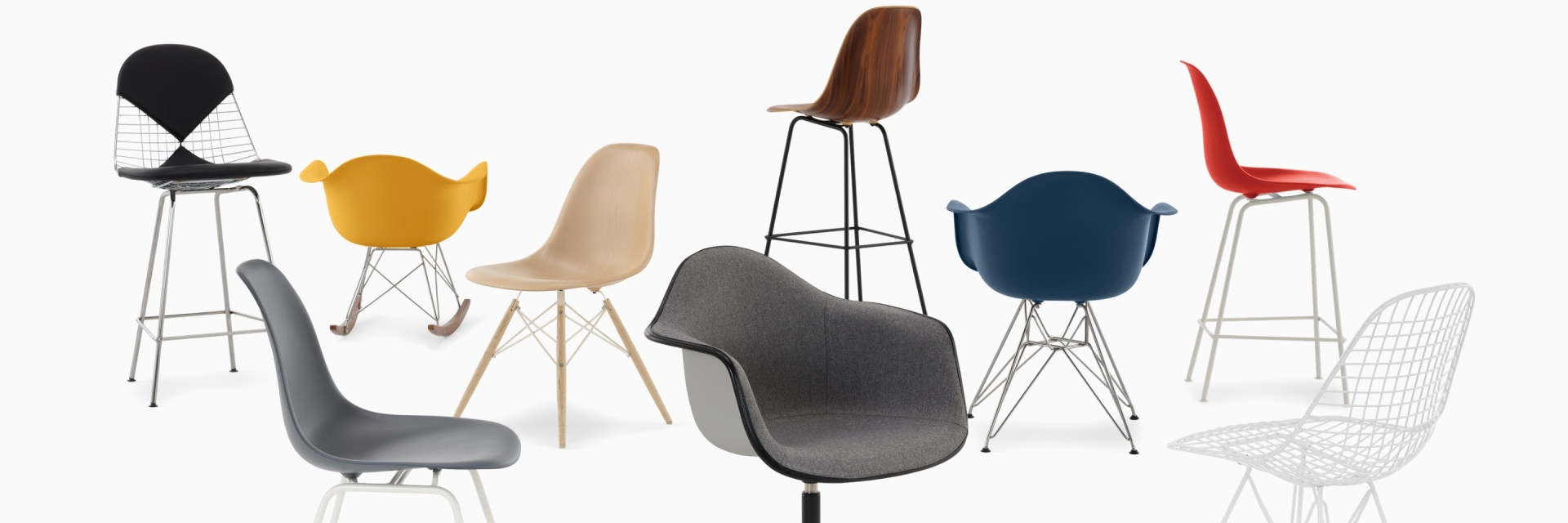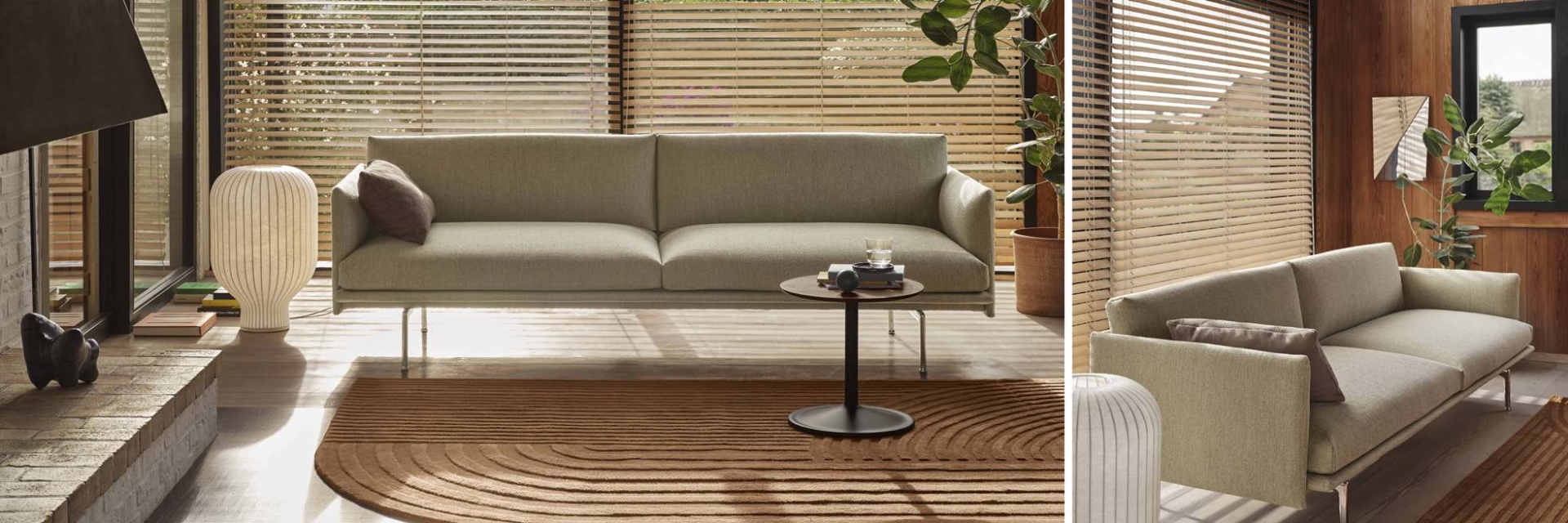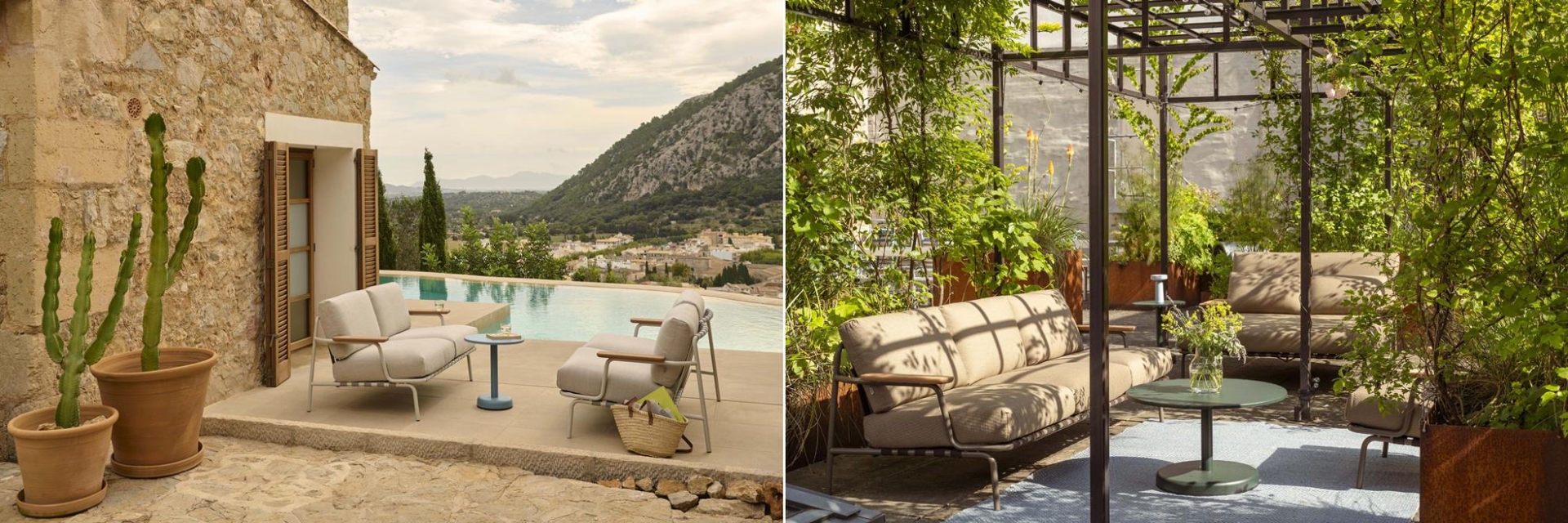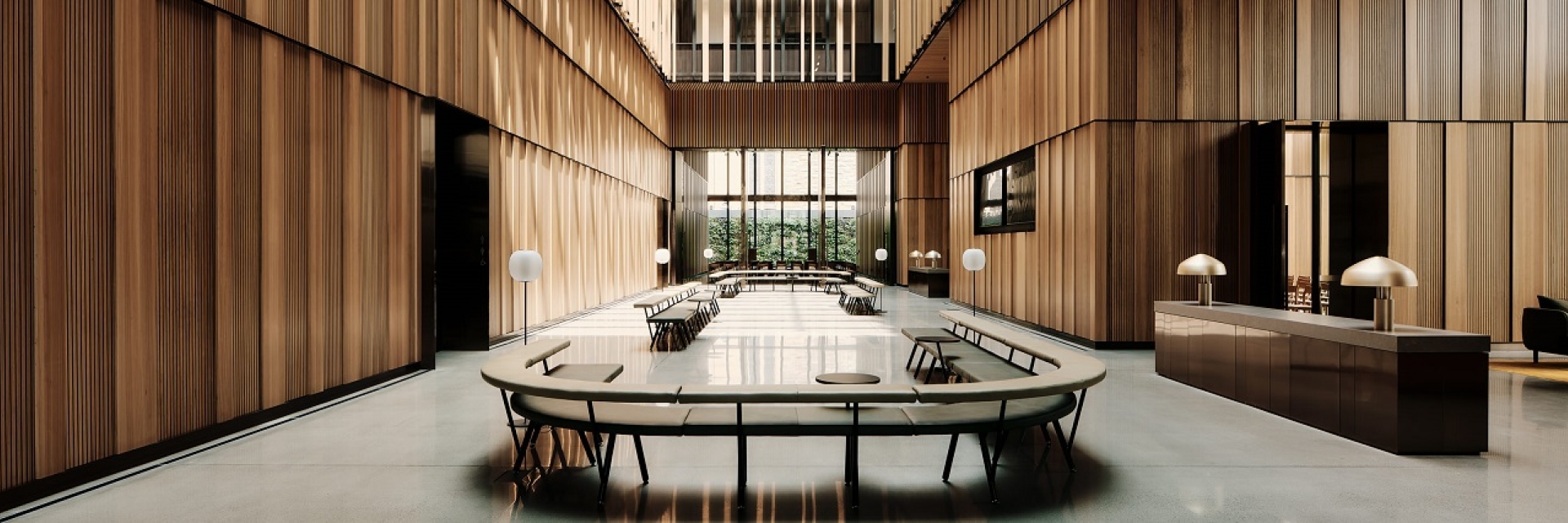
Arne Jacobsen was a visionary and highly prolific architect and designer. His work spanned from architecture to interiors, furniture, lamps, graphic design, textiles and design objects, such as taps and technical accessories, clocks, tableware and more. Many of his iconic furniture pieces were created as part of a total architectural design.
THE ANT CHAIR 1952
The ground-breaking design of the Ant was driven by Arne Jacobsen’s artistic approach to design and new methods of production.
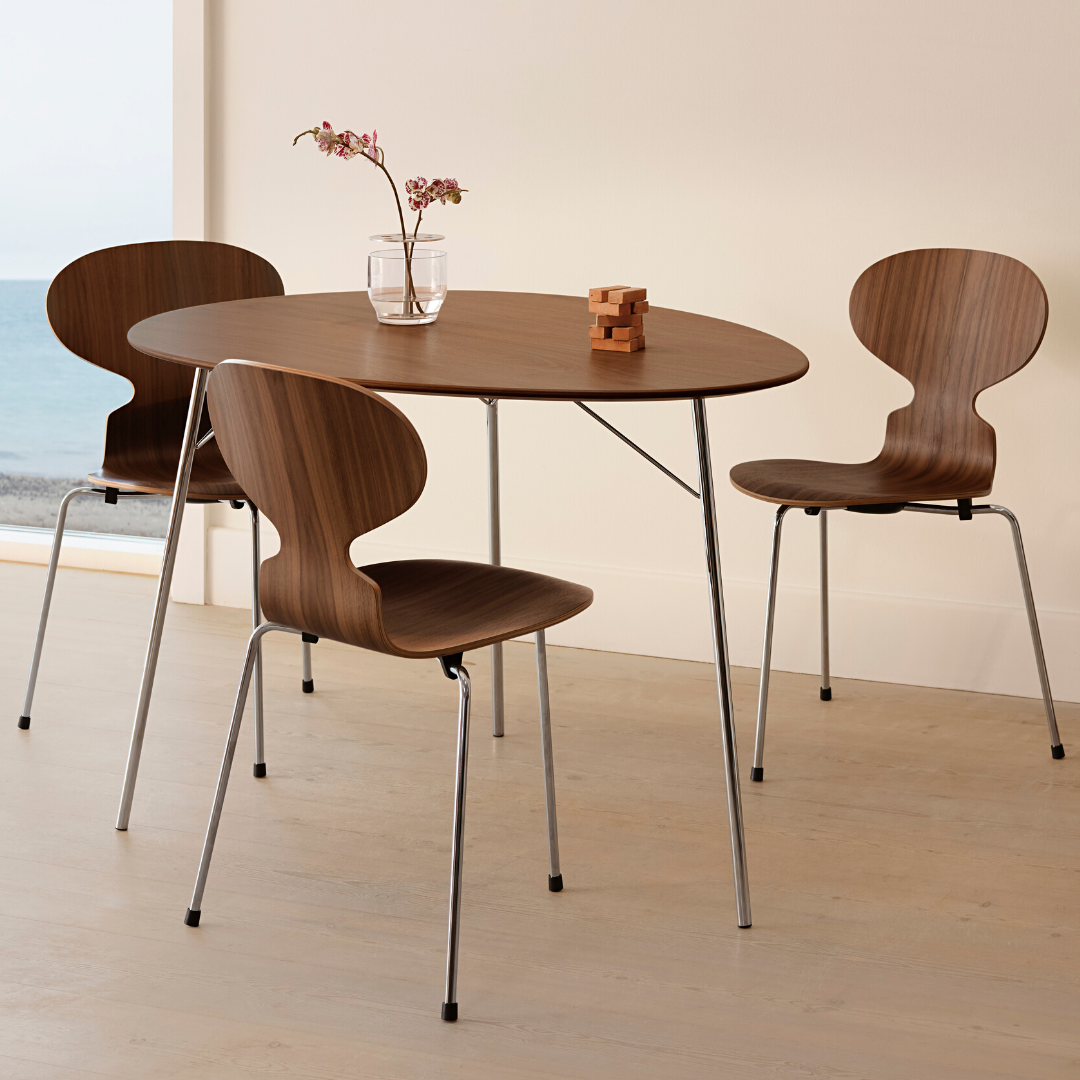
‘In the old days, it was pretty easy to design a chair, because the forms were different. My chair is made of compressed and bent plywood, it is three-dimensional. So I had to turn to clay in the design process.’ - Arne Jacobsen, 1953
The small, lightweight shell chair was the first of its kind, with seat and back shaped in a single sheet of plywood. Arne Jacobsen took advantage of the new capacities of industrial mass production to create a chair that combined light industrial materials with an organic and minimalistic expression. The Ant chair was Arne Jacobsen’s first shell chair, and was and still is produced by Fritz Hansen.
The ambition of creating a small, practical chair that matched the modern home as well as the conditions of industrial manufacturing was one he shared with fellow architects such as Finnish-American Eero Saarinen (1910-1961), Finnish Alvar Aalto (1898-1976) and American Charles (1907-1978) & Ray Eames (1912-1988). They all experimented with moulded plywood after WWII but creating the seat and back in a single sheet of plywood was pioneered by Arne Jacobsen.
The result was a game-changer, and ever since its launch in 1952, the three-legged Ant has held a prominent place in Danish and international design history.
With the Ant, Arne Jacobsen and Fritz Hansen had created a completely new chair type, and over the next two decades, Arne Jacobsen developed a whole range of chairs with new, elegant silhouettes that were produced by Fritz Hansen.
THE SWAN CHAIR 1958
As part of Arne Jacobsen’s iconic interior design of the SAS Royal Hotel, the Swan’s organic lines struck a contrast to the minimalist aesthetic of the architecture.

During the 1950s, its free, sculptural form made the Swan the image of a new era, and today, more than 60 years later, the design is found in public spaces and private homes around the world.
When the SAS Royal Hotel opened in 1960, it was Copenhagen’s first skyscraper and a symbol of a new age of prosperity, travel and international outlook. Both inside and out, the hotel was designed by Arne Jacobsen, and today, it is widely considered his principal accomplishment. With Swan and Egg chairs as pivotal features, Arne Jacobsen composed an elaborate total design characterised by harmony and resonance throughout, and with rich detailing in materials, patterns, colours and shapes.
The Swan chair’s organic expression is the result of Arne Jacobsen’s artistic approach to design and a novel technological method that Fritz Hansen had secured the rights to in the mid-1950s. With this new method, furniture could be shaped in a hard foam material, and the design was thus no longer limited to the technical capacities of wood.
Like a sculptor, Arne Jacobsen could model his chairs in plaster and clay before continuing the development process at the factory in collaboration with Fritz Hansen’s technical experts. This set the design free from the limitations of traditional materials.
Using this method, Arne Jacobsen created some of his most famous and innovative furniture designs, such as the Swan, the Egg and the Drop, which combined exceptional craftsmanship, modern technology and free artistic form in sculptural furniture.
THE EGG CHAIR 1958
The Egg chair was a pivotal element in Arne Jacobsen’s elaborate interior design of the SAS Royal Hotel, and today the chair holds the same iconic status, some may argue higher, as the famous hotel itself.

With its organic, sculptural form, the Egg is recognised as an iconic furniture design both in Denmark and around the world, with many considering it Arne Jacobsen’s principal design.
Sandor Perjesi, (born 1940) a model maker in Arne Jacobsen’s studio, recalls the time he worked with Arne Jacobsen on the Egg:
‘I remember the first time we went to a summer cottage near Tissø to work on the Egg. We crammed the plaster model into my car and spent an entire weekend adding and filing off material. Back and forth, like classic sculpting.’
The free curvature and sculptural expression of the Egg link it to the developments in the international design scene after the Second World War. American and European architects were using novel industrial methods and materials to develop a new design expression based on free, organic shapes. With designs like the Egg and the Swan, Arne Jacobsen was involved in defining this wave.
THE DROP CHAIR 1959
The simple lines of the Drop chair made it an ideal fit for the modern, international environment, Arne Jacobsen created at the SAS Royal Hotel.

Like the Egg and the Swan, the Drop is a result of Arne Jacobsen’s use of a new technological approach which meant that furniture could be shaped freely in a hard foam material that was subsequently padded and upholstered.
This liberated the design process from the technical restrictions imposed by more traditional materials. Arne Jacobsen explained how he used clay and plaster in his development of furniture models, gradually arriving at the solution like a sculptor perfecting a work of art. This new technology and Arne Jacobsen’s artistic approach to design hold the key to the unique sculptural expression that made his furniture designs so pivotal when they were created during the late 1950s.
THE AJ LAMP 1957
Since the 1920s, Arne Jacobsen had designed a wide range of table and floor lamps, including the Bellevue lamp from 1929 and the table lamp for Søllerød Town Hall from 1942.

Arne Jacobsen designed the AJ Lamp in 1957, and a few years later it became part of his famous total SAS Royal Hotel interior design.
The design exemplifies how Arne Jacobsen’s design practice aimed to achieve the most stringent and logical form. The design of the AJ lamp is based on the same basic figure from his past designs, but the expression has been reduced to straight lines and straight and oblique angles, which combine to lend the lamp a taut, sculptural expression.
Arne Jacobsen designed three versions of the lamp – a floor lamp, a table lamp and a wall lamp – and all three versions have remained in production by Louis Poulsen ever since the launch in the late 1950s.
Arne Jacobsen’s total design of the SAS Royal Hotel is now recognized as a principal accomplishment in Danish and international design history. In a contrast to the minimalist, rectilinear architecture, Arne Jacobsen designed the hotel interior as an elaborate gesamtkunstwerk (total work of art) with a rich display of architectural detailing, materials, patterns and colours.
For six decades, Arne Jacobsen was at the forefront of Danish architecture and design. Working as both architect, furniture designer, industrial designer and landscape architect, he made contributions to the world of design that remain as significant today as they were in his lifetime.
DESIGNCRAFT HAS PROUDLY REPRESENTED ARNE JACOBSEN DESIGN IN CANBERRA FOR OVER 20 YEARS

